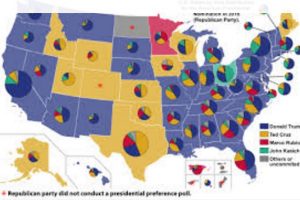In the modern world, data and information are driving forces of any business or operation. Poor data analysis can lead to unfortunate circumstances for any company or public organization. We only need to look at the latest election to see how false data collection and interpretation can lead to poor results: All state and national polls showed that Hillary Clinton would be the winner, but Donald Trump won the presidency by wide margins. One of the main reason analytics can be undermined is poor data quality. No matter how good your analytics specialist is and how thorough his analysis may be, it will be worthless if the initial data is flawed.
How Can Bad Data Impact Analytics?
· When bad data is collected for analysis, the whole analytics process slows down and eventually becomes useless. Instead of analyzing the data and getting the desired results, the analysts spend their time going through bad data and trying to eliminate inaccuracies.
- Further data collection is done to close gaps that could have been avoided
- Overly complex analysis is required to deal with flawed data
- Analytics specialists lose trust in the data they are given and produce less than satisfactory results
- In the end, companies can’t take advantage of the final analysis because they doubt its value
- What Impacts the Quality of Data?
 Knowing what influences data quality can help sift through unnecessary pieces and highlight the proper building blocks for high-quality analytics.
Knowing what influences data quality can help sift through unnecessary pieces and highlight the proper building blocks for high-quality analytics.
Objectivity and subjectivity
It’s impossible to make data fully objective because the gathering in itself is a subjective process. The best quality data has the highest objective factor.
Completeness
Do you have access to all the data? The completeness factor is defined by whether or not there is a sufficient amount of information to make a decision or to create new data. The more complete the data, the greater variety of analysis methods that are available. You can choose the one with the smallest margin of error to get a flawless result.
“Traditional methods are not in crisis, just expensive,” said Barbara Carvalho of Marist College, whose final poll of the race showed Clinton leading by 1 point, in line with her current lead. “Few want to pay for scientific polling”.
Authenticity
Is your data authentic? Does it reflect exactly what was happening? The authenticity of data depends on the method of its collection. Creating an error-free data collection method is key to getting the most authentic data for analysis.
Relevance
Is your data up to date? The real value of the information is closely related to how up to date it is. Sometimes collecting complete information can take a long time and the first pieces of data collected can lose their relevance. The “up-to-dateness” of the information fully depends on how it was collected.
The Snowball Effect
The collection of bad information initiates a snowball effect that in the end can completely paralyze a company’s work process, and lead to irreversible consequence for business growth.
· Projects take longer to complete and require more funding.
· Confidence in the analytics results falters.
· A project’s financial risk increases.
· Research slows down and even stalls.
· The decision-making process is delayed.
· Customer satisfaction is decreased.
Nowadays, data is not something you collect and store for further processing. It keeps flowing and needs constant checking and analysis. Setting up data quality measures and creating special tools for doing it, before collecting the information, can help a business avoid the unfortunate consequences of bad data analysis. Analyzing bad data is time-consuming, expensive, useless and should be avoided at all costs
